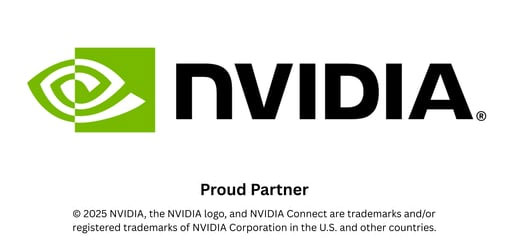As we cruise to the Q3 and edge closer to 2026, it’s clear AI won’t be merely an optional add-on – it will be woven into the fabric of business, society and everyday life. Drawing on recent expert statements and trends, here are five informed predictions about where AI will stand next year – and what that means for Europe’s workplaces, regulators and innovators.
AI Standardisation in Core Enterprise Functions
By 2026, AI won’t just be for early adopters – it’ll be woven into business‑critical operations. By 2026, more than 80% of enterprises will have used generative artificial intelligence (GenAI) application programming interfaces (APIs) or models, and/or deployed GenAI-enabled applications in production environments, up from less than 5% in 2023. gartner
This signals a transition from pilot projects to AI-enabled core processes, spanning finance and HR, as well as customer support and security. And the transformation is already on its way.
IDC supports this momentum, forecasting that 2025–26 will mark a pivotal shift from mere experimentation to mainstream AI adoption in enterprise-grade workflows.
Why it matters: If you’re not integrating AI into your strategy now, you’re racing uphill. Competitors embracing AI-first approaches will enjoy faster decisions, reduced costs and enhanced service. You’re bound to be left behind. Period.

Multimodal AI Will Go Mainstream
While current systems mainly process text, multimodal AI, capable of understanding text, images, audio and more together, is poised for mainstream use by 2026. Gartner posted on LinkedIn that by 2026, single-modality AI models will lose out to multimodal AI models in over 60% of GenAI solutions, up from less than 1% in 2023. linkedin
Google, Meta, OpenAI and others are investing heavily here. By combining visual, auditory and textual inputs, AI can offer truly smart assistants – automating complex customer interactions, interpreting documents and analysing medical imagery in medicine, for instance.
Why it matters: Businesses should prepare for richer, more natural AI capabilities – especially around customer experience, diagnostics and compliance checks.
Widespread Use of Synthetic Data

As data privacy concerns grow, synthetic data – generated by AI to mimic real datasets – will become essential. Gartner forecasts that by 2026, 75% of businesses will use synthetic data in AI model development, up from less than 5% now. gartner
This helps overcome challenges such as GDPR limitations, data shortages and ethical red tape. By simulating rare events or protected data, businesses can safely train AI without exposing personal data.
Why it matters: Enterprises must begin investing in synthetic data strategies now to ensure compliance and broaden AI possibilities later.
AI Governance and Explainability as Must‑Haves
AI’s rapid adoption brings accountability pressures. By 2026, transparency, trust and security measures will be integral to successful AI deployments. Gartner states that by 2026, organisations that operationalise AI transparency, trust and security will see their AI models achieve a 50 % improvement in terms of adoption, business goals and user acceptance. gartner
McKinsey’s 2025 survey shows senior leaders taking governance seriously, designing workflows, hiring AI officers and engaging boards more in deployment decisions. mckinsey
Why it matters: If your AI lacks clarity – what data it uses, how it decides – it risks user rejection or worse: regulatory penalties in Europe. Start building governance now.
Human - AI Collaboration Becomes Norm
AI won’t steal jobs wholesale by 2026. Instead, it’ll transform how we work, augmenting roles rather than replacing them. McKinsey data from 2025 reveals that 92% of companies plan increased AI investment, but only 1% feel fully mature in scaling it. mckinsey
Also, far more organisations expect reskilling, not wholesale layoffs. mckinsey
A Gartner executive predicts a surge in agentic AI, systems that take intelligent actions, like scheduling or initial analysis, under human supervision. theaustralian
Why it matters: Investing in employee training, process redesign and human-AI collaboration will be essential for success.
Final Thoughts: AI’s Future Is Closer Than You Think
The future isn’t five or ten years away. It’s next year. In 2026, the winners will be companies who:
Adapt early and wisely
Prioritise compliance, privacy and local sovereignty
Invest in real use-cases, not just shiny demos
If you’re still sitting on the fence, waiting for “the perfect moment”, this is your wake-up call. The moment is already here. And those who move now will shape the market while the rest are forced to follow.
Victor A. Lausas
Chief Executive Officer
Subscribe to North Atlantic’s email newsletter and get your free copy of my eBook,
Artificial Intelligence Made Unlocked. 👉 https://www.northatlantic.fi/contact/
Discover Europe’s best free AI education platform, NORAI Connect, start learning AI or level up your skills with free AI courses and future-proof your AI knowledge. 👉 https://www.norai.fi/





